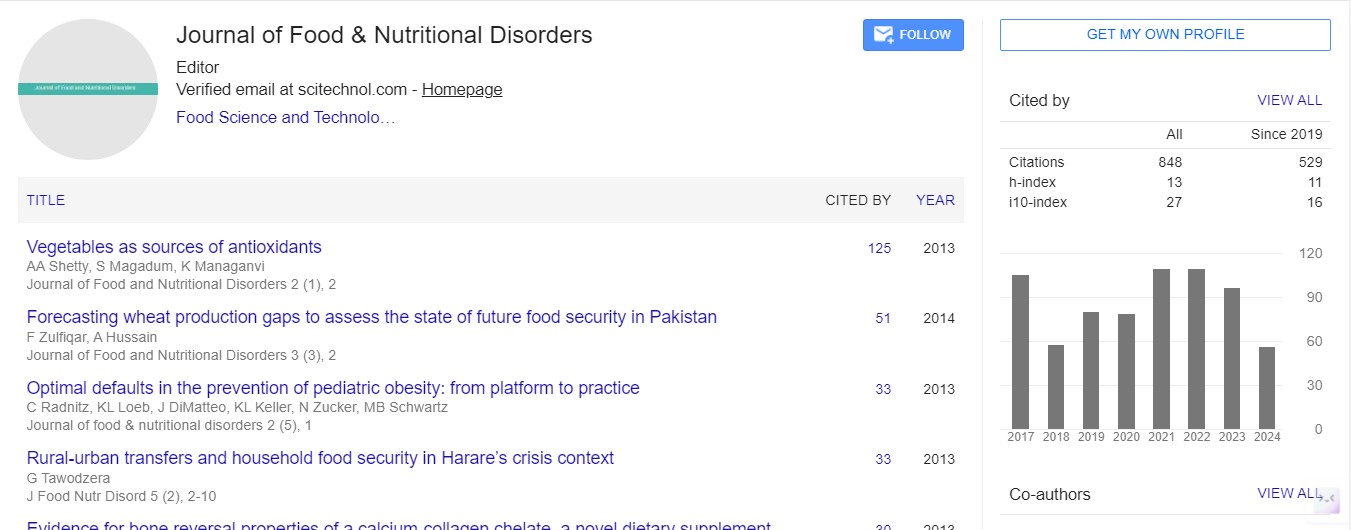Genetic diversity of Aspergillus flavus and occurrence of aflatoxin contamination in stored maize across three agro-ecological zones in Kenya
Grace W Gachara A, Anthony K Nyamache, Jagger Harvey, Gbemenou Joselin ,Benoit Gnonlonfin and James Wainaina
Kenyatta University, Kenya
: J Food Nutr Disor
Abstract
Aflatoxin contamination at post-harvest poses a serious challenge in achieving millennium development goals on food security especially in the developing world. In Kenya, major outbreaks of aflatoxicosis have been attributed to poor post-harvest storage practices. In this study, we conducted a cross-sectional survey within three agro-ecological zones in Kenya, to determine the occurrence and distribution of total aflatoxin in stored maize and the aflatoxigenicity potential of Aspergillus flavus in stored maize. The county selected were; Kitui, Nakuru and Kitale (in Trans-Nzoia County). Sampling sites were selected based on previous aflatoxicosis outbreaks (Kitui) and major maize production areas (Nakuru and Kitale) where little information exists on the occurrence of aflatoxin contamination. A total of one hundred and thirty (130) kernel maize samples were random collected during the period between June and August 2012. Moisture content was determined using the standard oven method and Aspergillus flavus was isolated by direct plating technique. Genetic diversity of the isolates was determined by PCR and Single Sequence Repeats (SSR) micro satellites analysis. Positive strains were induced to produce Aflatoxins B1 on Yeast Extract Sucrose Agar (YESA) and quantified using competitive ELISA technique. The results indicated mean moisture content of maize ranged between 6% and 34%, although this was found not to be significantly different (p=0.23>0.05). However, total aflatoxin contamination of postharvest stored maize samples between sites was significantly different (p=0.000, <0.05); with the highest contamination in Kitale at a mean of 9.68 μg/kg. Aspergillus flavus was isolated in 70% (N= 91) of the maize samples collected at postharvest. Aspergillus flavus isolates with the highest aflatoxigenicity potential were from Nakuru County with mean aflatoxin level at 239.7μg/kg. Genetic distance based on Neighbor Joining (NJ) clustered the Aspergillus flavus isolates into five main clusters. Principal Coordinate Analysis (PCA) analysis showed five distinct clusters with both axes explaining 60.17% of the variance. This study showed widespread distribution of aflatoxin contamination and a highly toxigenic A. flavus in stored maize in three major agro ecological zones in Kenya. These results suggest a potential health risk of aflatoxin outbreaks within these areas, thus call for more investigations.
Biography
E-mail: kikogash@gmail.com
 Spanish
Spanish  Chinese
Chinese  Russian
Russian  German
German  French
French  Japanese
Japanese  Portuguese
Portuguese  Hindi
Hindi 
